A few years ago, there was a common bit of etiquette on Twitter frequently known as the follow-back kindness. The idea was simple; when someone follows you, give them a follow back.
This applied mostly to “normal” users, as opposed to celebrities, brands, and public figures. No one expects to be able to follow Barack Obama or Katy Perry and get a follow back. No one expects a brand like Kellogg or Oreo to follow back either. It’s just normal users who are “expected” to follow back the people who follow them.
This etiquette died somewhere along the way, and the primary reason for it is the abuse that follow-backs suffered. It started off benignly enough, with special days labeled #FBF (follow back Friday) and the like. The idea there was that anyone could post the #FBF tag. Anyone who then followed that person would be followed back. Regular people would use this to grow their circles, and brands would use it to grow their followings.
This worked well for brands and marketing, because they don’t particularly care about their organic feeds all that much anyways. More often than not, brands are using a third party Twitter dashboard, one that provides filters or allows them to read lists as feeds rather than having to cope with a cluttered primary feed.
People started abusing the idea by following back anyone who followed them, but then sneakily unfollowing them over the course of the next several weeks or months. This would leave them with a more organic-looking high follower count without a correspondingly high following count.
Other people started abusing the normal follow back etiquette by following people in bulk , then unfollowing everyone who didn’t follow them back. Some people just unfollowed everyone they followed regardless of the follow back. This was called the follow/unfollow method, and I’ve written about it here.
In response to this, two things have happened on Twitter. The first is the gradual death of follow-back etiquette. People just don’t do it anymore. Oh, sure, some do, but if you follow 1,000 people, you won’t get more than 10 following you back.
The other response is the official Twitter response, which is to implement some limits on follows and unfollows. This is to minimize “follower churn,” which is their name for the follow/unfollow method. They don’t like bulk follows and unfollows, because they’re exploiting the system rather than using it organically like everyone else.
Twitter’s Limit
Twitter has several limits to different actions on the site. Their API has limits of 150 non-authenticated and 350 authenticated actions, for example. You can’t send more than 1,000 DMs per day, and you can’t tweet more than 2,400 times per day, with that limit divided per half hour. These aren’t the limits we’re concerned about, however.
First of all, Twitter does not directly limit the number of followers you can have. They limit the number of people you can follow, on a sliding scale based on the number of follows you have. It works like this. You can follow up to 5,000 people, no matter how few people follow you. When you reach this limit, you need to get more people to follow you if you want to follow more people. Twitter doesn’t state the level you need to reach, but it tends to be around 90%; in other words, you’ll need around 4,500 followers before you can break the 5,000 followed limit.
This is all detailed in their help center post about aggressive following. There you can read about why Twitter doesn’t like follower churn and how it harms the site as a whole. Additionally, they make sure to point out that the concept of “whitelisting” doesn’t exist on Twitter in terms of follows. There is a whitelist for certain app developers, but it only applies to API calls, not to follows, tweets, or other actions.
Twitter limits the number of accounts you can follow per day to just 1,000. That may seem like a lot, but for brands looking to grow over a million followers, 1,000 just isn’t that much.
The trick with this limit is that it isn’t really the real limit. 1,000 is the “technical” limit, at which point Twitter simply stops allowing you to follow more users. However, you’ll trip a lot of red flags well before you reach that point. When you’ve followed more than 100 or so accounts in one day, Twitter starts to look at your account to see what you’re doing. As the follow count rises, so too does their scrutiny. Most of the time, well before you reach 1,000 for the day, Twitter will have blocked you or issued a warning for aggressive following.
Twitter doesn’t define what aggressive following actually is, beyond simply saying that it’s “broad, indiscriminate following of accounts.” The idea is that they want to catch people who just follow everyone they can find in the hopes that some of those people follow them back.
Using Lists
Frankly, I don’t know why anyone would want to follow more than a couple hundred accounts. It’s hard enough to keep up with a Twitter feed when there are under 200 active users posting on it, let alone thousands. Still, some people want to make fast-moving, hugely volumetric feeds, and that’s their prerogative.
One way to circumvent Twitter’s follow limit is to use lists. If you haven’t looked at lists in a few years, they’ve gotten a lot better. It used to be that you could only have up to 20 lists, and that each list could only have up to 500 people on it. That’s still a lot, but it runs into trouble if you’re trying to have broad categories of people to watch.
These limits have been raised, as of 2013, making lists a lot more useful for organizing the people you want to watch but don’t want to follow yourself. Add people to a list and then follow that list, so you can see those posts in their own feed. I do this for influential marketers and resource bloggers I want to watch, but don’t want in my main feed all the time.
The new limits are up to 1,000 lists, with each list able to contain up to 5,000 people. That’s a much broader capability and it’s much better for this purpose than filling your unfiltered feed with thousands of people posting who knows what, all the time.
Growth Without Following
As I mentioned, one of the biggest reasons anyone follows that many people is to use the follow-back culture to kickstart their own audiences. It’s absolutely one of the slowest and least effective methods of doing so, which is why I went out of my way to dig up a huge list of ideas for kicking up your growth without it.
Buff up your profile so, at a glance, you look like someone worth following. There’s a lot of advice on Twitter profiles out there, with guides like this one full of great information. Granted, the infographic is a little out of date regarding Twitter’s layout, but the advice more or less still stands. You need a good profile pic, a good summary, a link to another social network or your site, and ideally a good pinned tweet. Your cover photo should be unique, and you can use it as a billboard if you want, though be aware of how it displays so you aren’t cutting off your message.
Tweet frequently, and strive to make those tweets interesting, humorous, provocative, or controversial. There’s nothing attractive about a series of banal life tweets, like the stereotypical Instagram food picture. Don’t talk about your day, don’t talk about your meals, don’t talk about petty fights you had in high school or whatever else. If you could reasonably label your tweet “gossip” don’t post it. Try to aim for humor, for something thought-provoking, or something that brings value to your readers. Minimize the posts you make about yourself and your business; typically only two in ten should be promotional.
Avoid flooding feeds; schedule posts if necessary. One newbie mistake is treating Twitter like a blog or Facebook note. I’ve seen people post long, ranting messages with 1/? At the end of them because they don’t know how long it will be. It’s crazy! Write a shorter message and link to a blog post, sheesh. Yes, I know some Twitter figures post long rants and are quite successful, but you might notice one thing about them; every individual tweet is self-contained. If your tweets aren’t connected, put a gap between them. Use Buffer or a tweet scheduler to space them out so you aren’t flooding anyone’s feed.
Make use of hashtags when you tweet, to expose your messages to a wider audience. I’ve written in greater depth on hashtags before, but I’ll cover it briefly here. There are two general types of hashtags; branded and unbranded. You always want to include 1-2 unbranded hashtags, because they’re the ones that get wide audiences and new users. Branded hashtags – those with your name or specific campaign in them – are more for monitoring and local discussion than for broad interest. Use tags like #cute, not tags like #macyssale.
Link to your Twitter account on other sites, particularly your website and other social networks. This does two things. First, it helps funnel traffic from one site to the other. When you link to Twitter from your website or from Facebook, it gives people an avenue to find you on the other site. The other thing it does for you is verifies your presence. When you can’t get official verification, you can at least make reciprocal links between profiles you own and your site. That way, users won’t be confused whether or not you actually own the profile.
Mention and interact with mid-range users in your niche. Why do I specifically say mid-range users? Well, look at some of the top-end users on Twitter. How often do people like Katy Perry actually respond to their followers? Not often, right? The same is true of even high-end marketers in specific niches. They have too many people vying for their attention to respond to everyone. On the other end of the spectrum, with low-end users, they can’t do much for you even if they do retweet or mention you. They have audiences as small as yours or smaller, so there’s not a lot of value to be had. Mid-range users, though, tend to have far more followers, but not enough presence to be considered top-tier. They’re also less targeted for influencer marketing, so you have a much better chance of getting their attention.
Look for people who have similar interests and get them to retweet your content. This is essentially influencer marketing, but you’re not necessarily looking for influencers so much as people with a reasonable number of followers who share your interests. These people, when they share your content, open it up to their audiences, who may also retweet, like, or even follow you. I recommend using a social verification app to check these users to see what percentage of their followers are fake before you do, though.
Ask for retweets. Retweets gain exposure, which can earn you followers. As it turns out, when you as for a retweet, you get it, at a much higher rate than you get for the same tweet without the ask. Several tests have been run on the subject. Bonus points if you spell out “retweet” instead of just “RT”. Of course, you need followers to get retweets, so it’s not always an effective strategy.
Pin popular tweets for a week or two. Whenever a tweet – particularly a tweet with a good link to your content – gets popular, go ahead and pin it to the top of your feed. You can leave it there for as long as it’s relevant to do so. I recommend leaving a pinned tweet around for a couple of weeks, though I’ve seen some marketers leave one up for a month while they promote a product, and I’ve seen others rotate every three days. I figure you can leave it up as long as you like, so long as it’s still bringing in value. As soon as it stops or something better comes along, drop the old one.
Buy followers. There’s nothing wrong with converting money into followers; that’s what Twitter ads do, that’s what ads with third parties do, and that’s what you can do by investing a little cash. The trick is to find a seller that gives you legitimate followers, not bots or out-of-country followers that aren’t useful to you at all. You can go ahead and avoid Fiverr, I’ll give you that freebie right up front.
Participate in Twitter chats. Twitter chats are discussions centered around a particular hashtag, scheduled to take place at certain times, and moderated by certain influential figures. It’s a time when you can interact with and engage a whole lot of potentially influential people, some of whom will broadcast your messages to their followers, and others who may follow you themselves. Be insightful and helpful as much as you can.
Embed tweets and the Twitter widget on your blog. The more you use Twitter, the more you will grow on Twitter. Embedded tweets are great both for illustrative purposes and for getting users to retweet when they might not otherwise think to. The widget is just a good addition to promote yourself in general.
Make sure to engage with users regularly, not just influencers. It gets to be pretty transparent if the only people you engage are the high end users, leaving normal people in the dust. Don’t be transparent; be engaging.
Maintain constant activity. At the end of the day, this is the number one tip I can give you. No one is going to follow or engage with an account that doesn’t post. If you’re too passive, just sitting around doing nothing, nothing is exactly what will happen to you.
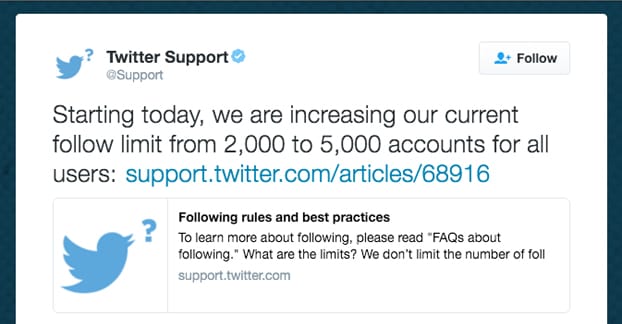
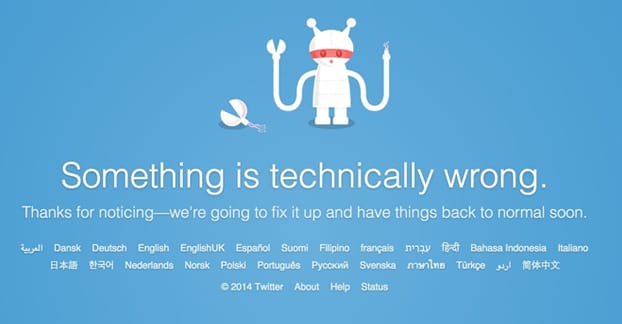

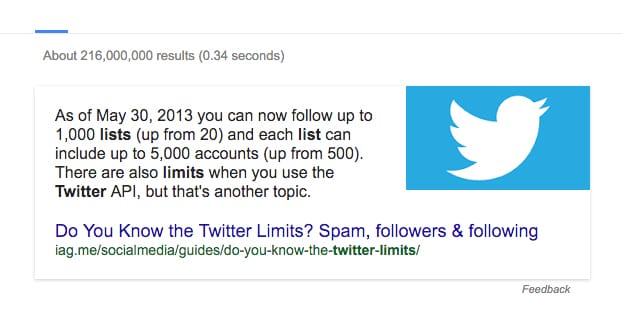
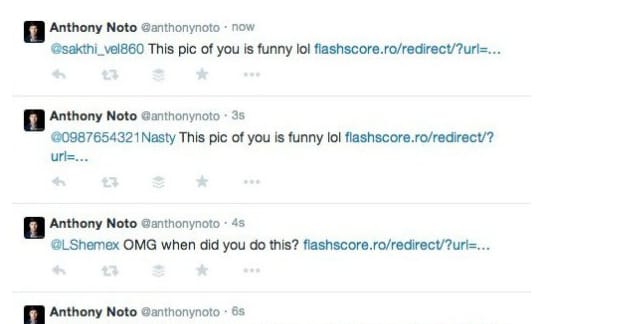
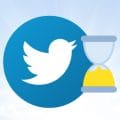
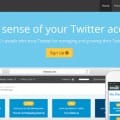

Very useful. Not sure if 1 in 10 people will follow me back, but I get what you were going for there. Lots of good info.
I’ve tried following loads of people to gain followers. But this takes a lot of time and it’s very slow. And it feels like spamming.
Very informing! dont wanna lose my account 😛